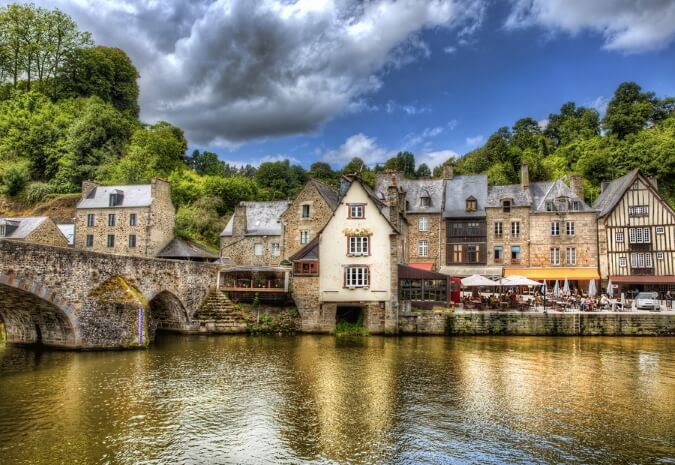Steeped in legendary figures and fearless sea crossings, you won’t find a much more colourful history than that of Breton mythology. Having braved the ocean to escape the Anglo-Saxons, the newcomers became the heroes of local fables – some true and some… more imaginative. But whatever the real stories were, there’s no doubting the magical allure of these Breton destinations. Here, we take a look at some of the most famous local legends, as well as the best places to immerse yourself in the medieval history of the region.
A brief history of Breton mythology

The Bretons migrated from Great Britain to the north-western shores of France to escape the Anglo-Saxon invasion of England. Ever since, the Celtic community has called Brittany home, and many of the streets and villages are named after key figures or events in their heritage.
Across the region, you’ll find tales of dragons, evil deeds and boats made of leaves that accompanied the new arrivals on their historic crossing, while Breton churches often feature stone eulogies to these fantastical stories. As such, myths and legends form a strong part of Brittany’s culture.
Breton myths and legends

Every parish in Brittany is said to have its own Ankou – a hooded spirit who watches over the graves and collects the souls of the dead. It’s said that the last person to die in the parish each year then takes on the role for the next 12 months. Look in any parish across the region and you’ll likely find a stone rendition of the legendary figure.
Les Lavandières, or the Midnight Washerwomen, are said to wash shrouds on the coastlines of Brittany at midnight. The women are very small with webbed feet, but with a deceptive strength despite their size – a trait rarely seen unless they are disturbed. Legend has it that you can hear them singing if you find yourself by the coast late at night.
Built on the Brittany shoreline by King Gradlon for his daughter Princess Dahut, the mythical city of Ys was a decadent gift. So adorned with riches in fact that the sea rose up and swallowed it up as the royal family escaped on horseback. The legendary location is said to have existed in the Baie de Douarnenez – found in the idyllic Crozon peninsula.
The best places for a Breton road trip

Synonymous with the artist Paul Gauguin, Pont Aven is a beautiful spot to immerse yourself in Breton culture. Just over an hour’s drive from the aforementioned Baie de Douarnenez, this village is famous for its scenic riverside walks and annual flower festival. The Fête des Fleurs d’Ajoncs takes place on 1st August each year, and is a vibrant celebration of Breton culture. Expect traditional music and dress, medieval fest-noz dancing, not to mention plenty of local food specialities.

With the region’s main roads passing it by, Auray has remained a peaceful sanctuary of historical charm. The nearby fishing port of St Goustan still sees many ancient boats dock on its quays, sometimes taking the same spot as Benjamin Franklin did in 1776. The quaint area is renowned for its lively arts and crafts scene, and on Mondays the town centre hosts a raucous market offering up plenty of traditional goods and locally made gifts.

The medieval walled town of Dinan sits on the banks of the Rance river, a pristine example of historical preservation. It was at the Château de Dinan in 1065 that Conan II surrendered to William the Conqueror during the Breton-Norman War – a battle famously depicted in the Bayeux Tapestry. Today the castle still stands, and houses a museum of the local area. Visit during July to enjoy the Fête des Remparts, an immersive two-day festival of medieval jovialities.
Ready to explore the myths and legends of Breton for yourself? Take a look at our crossings from Dover to Calais today.



